Overuse injuries can be excruciating. They can also be hard to prevent if you use a muscle or other part of your body repeatedly on a daily basis.
An overuse injury is a damage to the muscles, bones, tendons, or ligaments from repetitive stress. Some of the leading causes of such injuries have training or preventative technique errors.
For students, overuse injuries are most common among athletes that take part in year-round athletics. These athletics account for more than half of students in middle school and high school.
Some of the most diagnosed overuse injuries are listed below.
Contents
Elbow and Arms
Your elbow joint is fluid, cartilage, bone, and ligaments. When used frequently, the joint can suffer from sprains and fractures. Overhand throwing puts major stress on the elbow.
Baseball players’ most common injury is called the Little League Elbow, also known as medial epicondylitis. The pain occurs inside the elbow, and can cause throwing velocity decreases. Golfers also experience this (Golfer’s Elbow).
Tennis elbow, known as lateral epicondylitis, occurs when the tissue connecting the elbow to the forearm muscle becomes inflamed, similar to medial epicondylitis. Sufferers will feel pain on the outer part of the arm..
Symptoms indicating an arm or elbow injury has occurred include:
- Decreased velocity in throwing
- Forearm pain
- Weak grip
- Wrist pain
- Swelling or pain lingering in the side of the arm and the front of the shoulder
- Stiffness
Other possible injuries can include:
- Rotator cuff tendinitis (swimmer’s shoulder)
- Osteochondritis dissecans
Overuse Injury of the Knee
The knee is among the biggest joints in the body, and because of this, it is vulnerable to injury. Common injuries include dislocation, fractures, and tears of the muscles. These injuries occur mostly in sports that consist of twisting, jumping, or sudden movements of the legs.
An anterior cruciate ligament (ACL) tear or sprain is one of the most common knee injuries. Athletes that play high-impact sports such as football or soccer The injury results from changing direction too rapidly, land incorrectly from a jump, or stop unexpectedly.
Jumper’s knee (patellar tendonitis) is an injury which occurs mostly in jumping or running sports when an athlete places force on the knee or falls in an awkward position—tissue inflammation results in joining the kneecap to the skin bone.
Symptoms of a knee injury include:
- Pain while bending the knee
- Swelling
- Stiffness in the knee
- Lack of range of motion
- Tenderness
- Discomfort
Other commonly occurring injuries can include:
- Medial collateral ligament (MCL) sprains
- Iliotibial band (IT band) syndrome
- Housemaid’s knee (prepatellar bursitis)
- Runner’s knee (patellofemoral syndrome)
Ankle and Foot
A foot contains 33 joints, 26 bones, and more than 100 ligaments and tendons. The level of force placed on a foot when it meets the ground can cause a multitude of lingering damage.
Shin splints (medial tibial stress syndrome) are the pain on the inside edge of the shinbone. They are most often associated with running, but they can happen after any physical activity. This happens when muscles become overworked.
Heel pain is also common among athletes. Plantar Fasciitis affects the tendon that runs under the foot. Runners, dancers, and volleyball players commonly experience this injury.
Symptoms of a foot or ankle overuse injury has occurred include:
- Mild swelling along the tendon
- Pain and stiffness in the foot
- Tenderness to the location of the injury
Common injuries include:
Sufferers can prevent overuse injuries with the right education. Here’s some advice to avoid damage:
- Give your body enough time to recover.
- Add cross-training into your workout routine.
- Warm-up and cool down after workouts.
- Increase no more than 10 percent per week.
- Listen to your body.
Seeking Treatment
Overuse injuries get treated best when caught early. The right treatment and activity modification techniques initiate in the best scenario. They are diagnosed from a physical examination from your doctor. Your doctor will come up with the best treatment plan for your situation. Treatment depends on your condition.
Depending on the seriousness and kind of injury, treatment options may include icing the area, rest, medicine, physical therapy, or even surgery.
Look out for symptoms, including forearm pain; wrist pain, decreased velocity in throwing, weak grip, swelling or pain in the front of your shoulder and side of your arm, and stiffness.
Sports Injuries in Students
Overuse injuries are responsible for almost half of all sports injuries in middle and high school students.
Sports injuries for ages 5 to 14 include:
- 28 percent in football
- 25 percent in baseball
- 22 percent in soccer
- 15 percent in basketball
- 12 percent in softball
Let Us Help
To accurately diagnose a persistent knee injury, making an appointment with your orthopedist is crucial, whether it is to do an X-Ray, MRI, or a similar test.
The earlier you diagnose the problem, the sooner you can begin the recovery process. If a knee injury is holding you back, request an appointment with Thunder Basin Orthopaedics.
With offices conveniently located in Douglas and Gillette, the Thunder Basin Orthopaedics team is ready to help you get back in the game. At Thunder Basin Orthopaedics and Sports Medicine, our surgeons are well-experienced and specialize in treating various orthopaedic injuries, including sports injuries.
Our expert staff and experienced surgeons offer the best possible treatment and utmost care to each individual. Make an appointment or contact Thunder Basin Orthopaedics today!


